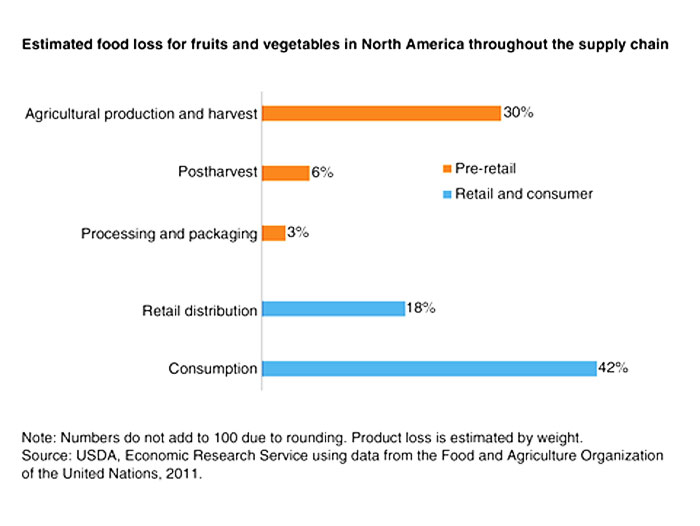Food Loss: Why Food Stays On the Farm or Off the Market
April 13, 2020 | 1 min to read

Why would a grower leave food unharvested in the field?
Researchers at the U.S. Department of Agriculture’s (USDA’s) Economic Research Service (ERS) identified a variety of economic factors that influence growers or distributors in their decisions regarding food loss, including:
- price volatility,
- labor cost and availability,
- lack of refrigeration infrastructure,
- aesthetic standards and consumer preferences,
- quality-based contracts, and
- various policies related to the harvest and marketing of fresh produce.
ERS estimates that $161.6 billion of food at the retail and consumer stage of the supply chain goes uneaten yearly. Through the entire supply chain, the Food and Agriculture Organization of the United Nations estimates that 30 percent of global food loss occurs at the agricultural production and harvest stage, 6 percent at post-harvest, 3 percent at processing and packaging, 18 percent at retail and distribution, and 42 percent at consumption. While the causes of food loss at the end stages of the supply chain have been well studied, the causes of loss on the farm and in early distribution stages have not. Food loss as it relates to fresh fruits and vegetables is especially challenging because these foods are highly perishable.
To read the rest of the story, please go to: USDA ERS
